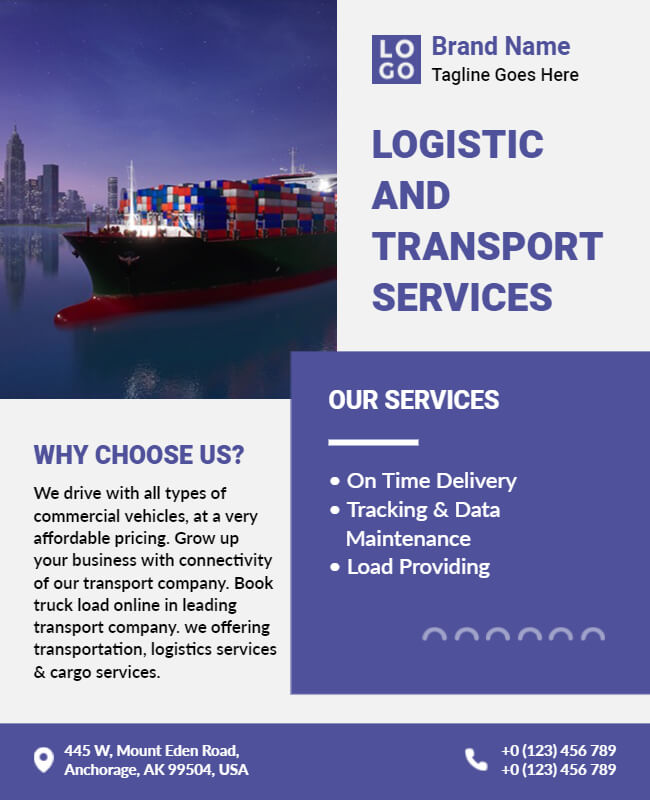Transit Advertising Philippines: Get To Thousands of Commuters Daily
Transit Advertising Philippines: Get To Thousands of Commuters Daily
Blog Article
Understanding the Duty of Transit Advertising And Marketing in Enhancing Brand Name Visibility and Consumer Interaction
Transportation advertising has actually become a pivotal component in the advertising landscape, providing unique chances for brand names to elevate their presence and engage consumers efficiently. With the ability to get to a diverse and captive target market during their day-to-day commutes, these advertising approaches are not just regarding exposure; they have to do with creating meaningful connections with possible consumers. As we discover the complex advantages and cutting-edge methods within transit advertising and marketing, it comes to be important to consider exactly how these components jointly influence consumer understanding and behavior, raising questions concerning their long-lasting effect on brand name loyalty.
Meaning of Transportation Advertising
Transportation advertising describes the technique of advertising products, services, or brand names via advertisements put around public transport systems. This type of advertising and marketing encompasses a range of placements, consisting of posters on buses and trains, electronic screens at transit terminals, and wraps on the exterior of vehicles. It aims to get to a varied target market, profiting from the high foot website traffic associated with public transportation.
Transit advertising is tactically positioned to capture the interest of commuters, who typically invest substantial time waiting or traveling. By incorporating advertisements right into the everyday routines of individuals, brands can produce an enduring impact and foster brand name recognition. The tool is especially effective in city atmospheres, where public transport is a main mode of travel.
Furthermore, transportation marketing can help with local targeting, permitting organizations to get to details demographics based on transit paths and terminal locations. As metropolitan populaces expand and the use of public transportation rises, this advertising approach has acquired prominence as a vital element of incorporated advertising and marketing techniques. The vibrant nature of transit advertising, incorporated with its capability to engage customers in a captive atmosphere, emphasizes its significance in modern marketing methods.
Advantages of Transit Advertising And Marketing
The performance of transportation marketing depends on its capacity to provide a plethora of advantages to brand names seeking to improve exposure and engagement. Among the main advantages is the comprehensive reach it supplies; transportation advertisements can properly target varied demographics across city locations, reaching both pedestrians and commuters alike. This wide exposure considerably enhances brand name understanding.
Another benefit is the high regularity of impressions. As transit vehicles follow well established routes and stop at multiple locations, they create repeated direct exposure that enhances brand name messages. This regularity cultivates experience, which is essential in customer decision-making.
Transportation advertising and marketing is likewise cost-effective contrasted to various other media systems. Given its extensive reach and potential for high impressions, brands often experience a lower cost per thousand impressions (CPM), maximizing their marketing budget.
Moreover, transit advertisements can produce a sense of community link. By lining up with local transit systems, brand names can resonate with local target markets and promote a sense of neighborhood pride. This localized approach boosts brand name commitment and involvement, making transit marketing an engaging option for organizations aiming to solidify their visibility in the marketplace.

Efficient Methods for Transit Campaigns
To take full advantage of the effect of transportation campaigns, brand names should utilize critical planning and execution tailored to their target market. Initially, determining the demographic features of the target market using public transit is important. This enables brands to develop individualized messaging that resonates with prospective customers.
Following, selecting the ideal transportation mediums is crucial. Whether making use of bus covers, train posters, or electronic displays, each medium has one-of-a-kind advantages that can improve presence. As an example, vibrant visuals on bus wraps can bring in interest, while digital ads can be upgraded regularly to show prompt promos.
Moreover, incorporating a cohesive branding technique across transit platforms guarantees consistency and enhances the brand name's identity. Making use of unforgettable taglines and attractive layouts will reinforce brand name recall among commuters.
Finally, timing is a vital variable in performing successful transit projects. Launching campaigns throughout peak travel hours or regional events can dramatically increase exposure and interaction. By using these approaches, brand names can efficiently harness the possibility of transit advertising and marketing, cultivating higher awareness and link with their target market. Eventually, a well-executed transit project can drive considerable growth in brand name exposure and customer involvement.

Gauging Influence and Interaction
In examining the efficiency of transit ad campaign, precise measurement of impact and engagement is important for brand names looking for to enhance their advertising approaches. Metrics such as reach, regularity, and perceptions supply fundamental information to examine presence. Analyzing these variables helps identify exactly how lots of prospective consumers are exposed to the advertisements throughout their everyday commutes.
Engagement can be further gauged with consumer communications, such as site web traffic, social networks mentions, and direct responses to calls-to-action featured in the advertisements. Utilizing devices like QR codes or one-of-a-kind URLs can assist in tracking of consumer behavior directly linked to transportation projects. recommended you read Studies and comments systems additionally serve as useful techniques to gather qualitative data on customer perceptions and recall of the advertisement.
Moreover, progressed analytics and acknowledgment models can associate transit direct exposure with subsequent buying behavior, offering insights right into the roi. By using a comprehensive method that incorporates qualitative and quantitative steps, brands can establish a nuanced understanding of their transit marketing influence. Ultimately, this data-driven strategy enables brands to refine their campaigns, ensuring they reverberate properly with target market and enhance overall brand name visibility.
Situation Studies of Effective Projects
Effective transit advertising campaigns offer as compelling examples of just how reliable strategies can elevate brand visibility and interaction. Transit Advertising Philippines. One remarkable case is the "I Love New York" project, which changed the city's image and drew in countless vacationers. By making use of metro ads, billboards, and bus wraps, the campaign developed a solid, natural brand name identification, resulting in a considerable uptick in tourism and regional organization patronage
Another excellent project is Coca-Cola's "Share a Coke" initiative, which leveraged transportation advertising and marketing to customize the brand experience. By featuring preferred names on promotional materials throughout different transit platforms, Coca-Cola cultivated a much deeper emotional link with consumers, motivating them to share their experiences on social networks.
Furthermore, the "Got Milk?" campaign properly made use of public transport advertisements to get to a wide target market, strengthening the message of the value of milk in a well balanced diet plan. The project saw a measurable increase in milk consumption in target demographics.
These study highlight that when web executed attentively, transit advertising can substantially enhance brand presence, foster consumer interaction, and drive measurable outcomes, showing its important duty in modern advertising and marketing approaches. - Transit Advertising Philippines
Final Thought
In final thought, transportation advertising offers as a crucial device for enhancing brand name presence and cultivating consumer engagement. By using purposefully put promotions within mass transit systems, brand names can efficiently reach diverse audiences and enhance acknowledgment with constant direct exposure. The implementation of browse around this site targeted messaging and ingenious strategies further enhances the impact of transit campaigns. Inevitably, the ability to gauge interaction and assess successful instance research studies emphasizes the efficiency of transit advertising in driving brand name loyalty and customer interactions.
Transit advertising has emerged as a critical element in the marketing landscape, supplying distinct opportunities for brand names to raise their presence and involve consumers efficiently.In addition, transportation marketing can assist in localized targeting, permitting services to get to particular demographics based on transportation courses and terminal locations.In reviewing the effectiveness of transportation marketing campaigns, exact dimension of impact and engagement is essential for brands seeking to optimize their advertising methods.Effective transportation advertising projects offer as engaging examples of how efficient methods can boost brand visibility and interaction.In conclusion, transportation advertising and marketing offers as an essential device for improving brand name visibility and cultivating consumer involvement.
Report this page